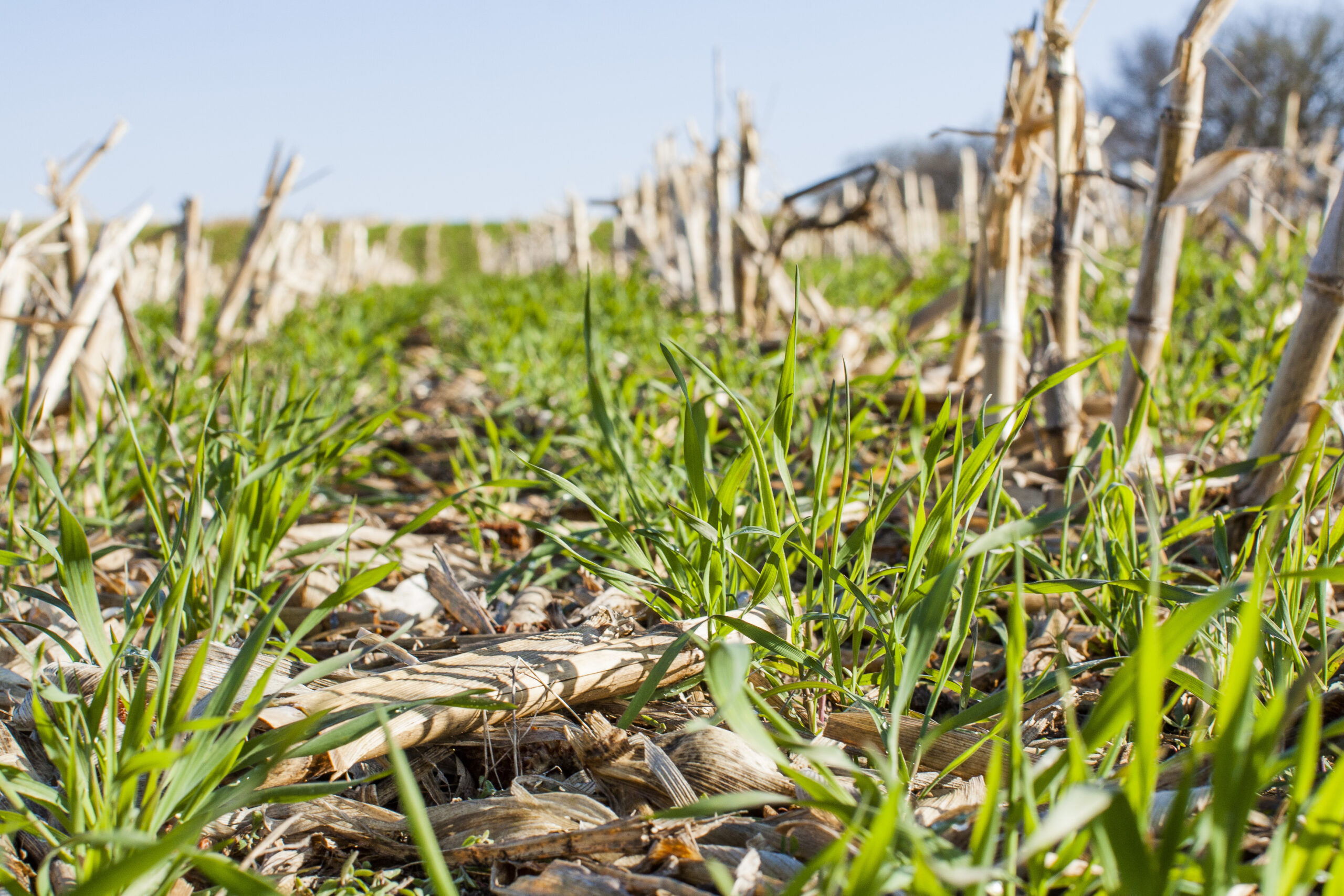
If this is your first season with cover crops—or you’re looking for ways to manage them without leaning so hard on chemicals—you’re not alone. Today’s farmers are starting to explore different termination methods, whether for soil health, input cost savings or just to see if there’s a better way to get the job done.
Why Spring Termination Matters
Spring termination is a critical step in making sure your cover crops don’t compete with your cash crops. If they’re not terminated effectively, they can steal nutrients, water, and sunlight from your main crops, leading to stunted growth and lower yields.
There’s also the weed factor. A thick cover crop can suppress winter weeds, but if those weeds get a chance to go to seed, you might be setting yourself up for trouble down the road. Effective termination ensures that your fields start clean, giving your cash crops the best possible conditions to thrive.
How you approach termination depends on what’s growing in your field, your equipment, and your long-term soil health goals. Let’s take a look at some of the best options.
Winter-Kill
With Missouri seeing lots of snow and ice this winter, you might already have a head start. Cold-sensitive cover crops like radishes, oats, and some clovers likely didn’t make it through the deep freeze. If your fields are already brown and breaking down, nature did the work for you.
But if you still see a green canopy, don’t assume it will die off in time. Hardy species like cereal rye, hairy vetch, and crimson clover can survive harsh conditions and keep growing into spring. In that case, you’ll need a backup plan.
Rolling & Crimping
A roller-crimper is a great option for farmers looking to reduce chemical use. This tool flattens cover crops and crimps their stems, stopping growth and creating a thick mat of residue that acts as a natural weed barrier.
Timing is everything. Rolling works best when cover crops are at early flowering (also known as anthesis). If you roll too early, they may bounce back. Too late, and you’re delaying the breakdown process. For best results, roll on a warm, dry day when plants are actively growing.
Livestock Grazing
If you run cattle, sheep, or even goats, grazing can be a win-win for termination and soil fertility. Livestock naturally trample and eat down the cover crop, recycling nutrients back into the soil.
The key is managing stocking rates. If you don’t have enough animals per acre, your cover crop might regrow before planting time. If you overstock, you risk compacting the soil, especially if it’s wet. Rotational grazing can help you find the right balance, keeping animals moving to prevent overgrazing in any one spot.
Tillage
While many are moving toward no-till systems, light tillage can still be an effective tool for terminating cover crops—especially if you’re dealing with stubborn species. A shallow pass with a disk, cultivator, or undercutter can knock down covers without disturbing too much soil structure.
If you’re in a no-till program but need an emergency termination option, strip tillage could be a compromise. By disturbing only the planting row, you keep most of the benefits of no-till while making way for your cash crop.
Rethinking Chemical Termination
As we’ve learned more about how certain chemicals work, their long-term effects have become a hot topic. Many farmers are looking for ways to manage weeds and terminate covers without relying solely on herbicides. If that’s your goal, a mix of mechanical and natural termination methods can be a step toward more resilient, self-sustaining fields.
That said, there are times when chemicals still play a role. Contact herbicides, like paraquat, work quickly but may require multiple applications for complete control. Systemic herbicides, like glyphosate, are more effective but come with concerns about resistance and long-term soil health.
If you’re considering a chemical approach, be mindful of:
- Application Timing – Spraying too early may not fully kill the cover crop, while spraying too late can delay cash crop planting.
- Weather Conditions – Wind, temperature, and rainfall affect herbicide effectiveness and reduce the risk of drift and runoff.
- Tank Mixing – Some herbicides work better together, but others can neutralize each other. Always follow label recommendations.
Looking Ahead to Spring
If your fields are still holding onto cover crops as we head into March, now’s the time to decide how you’ll manage them. The right approach depends on what you planted, what’s next in your rotation, and whether you’re looking to cut down on inputs.
No matter what direction you take, Missouri Southern Seed has the seed and the know-how to help. Reach out—we’re happy to talk through your options.
